How we play sometimes depends on where we play. Activities indoors are often constricted by space, crowding, and the presence of breakable objects. “Go outside and play,” is a cry of desperation uttered by a frustrated parent whose rambunctious kids have been cooped up inside too long. But where does that play take place?
For most of human history, kids spent their free time in the half-cultivated land around settlements or the adjacent fields or woodlots. As cities grew and more and more people flocked to them, busy streets often became the locus of children’s activities, where they mucked about in alleys, gathered on stoops, or dodged horses and carriages (designated playgrounds with slides, teeter-totters, and other apparatus didn’t really emerge until around 1900 when Progressive-era reformers began to lobby for their creation in cities). In the 19th century, however, greater wealth and new technologies facilitated the development of the private grass-covered lawn, which in turn became the primary playground of children and families.
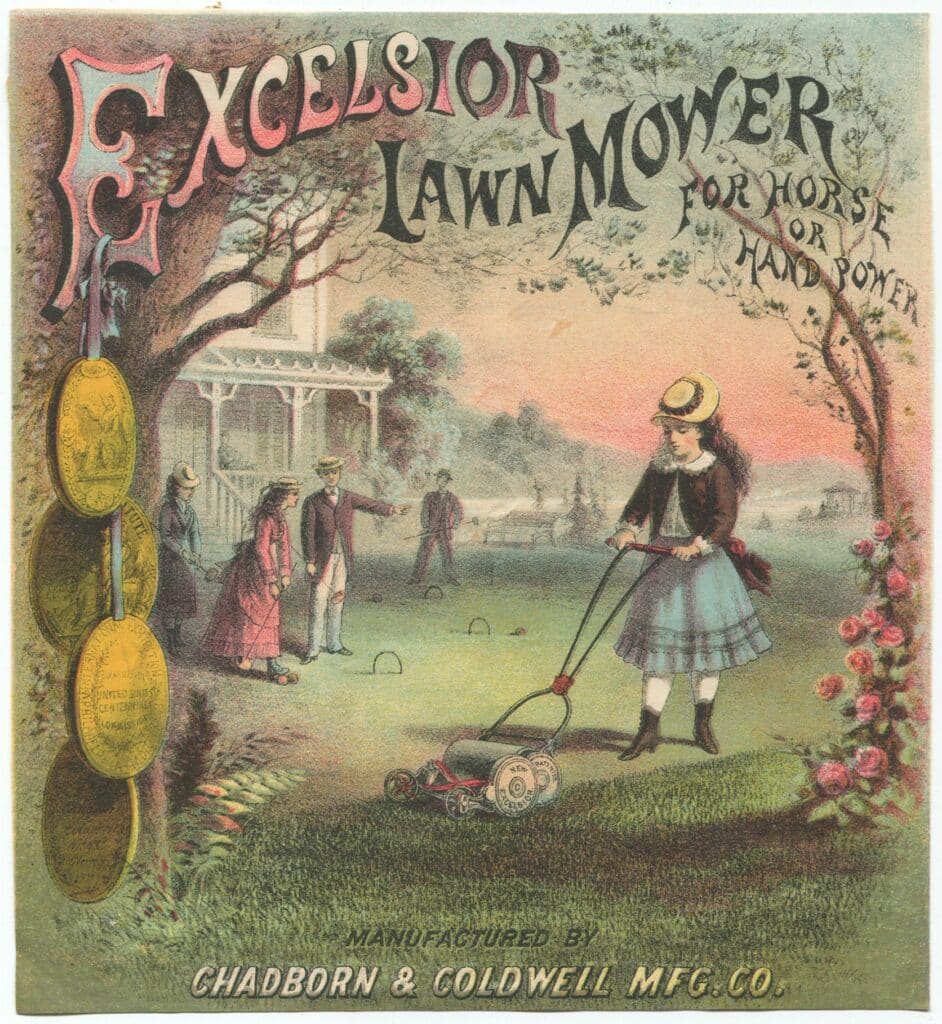
Traditionally lawns had been a luxury of wealthy estate owners with money to burn and plenty of servants to clip, mow, and groom expanses of greensward. Gradually in the 19th century, the price of lawn care began to come down, but it was still the province of the middle and upper classes. As Dr. Isaac P. Trimble noted in a report in 1861, “The first thing that is wanted for a good lawn is a great deal of money.” The desire for lawns meant, however, that companies began to produce the products necessary to establish a verdant field of green. Mass packaging of seeds such as bluegrass, rye, and white clover made for the soft, easily cut, and durable lawns that people wanted. Equally as important as the type of seed was the lawn mower to cut it. Industrialization meant that equipment like lawn mowers could be mass produced, making it possible for middle-class Americans to install and maintain lawns.
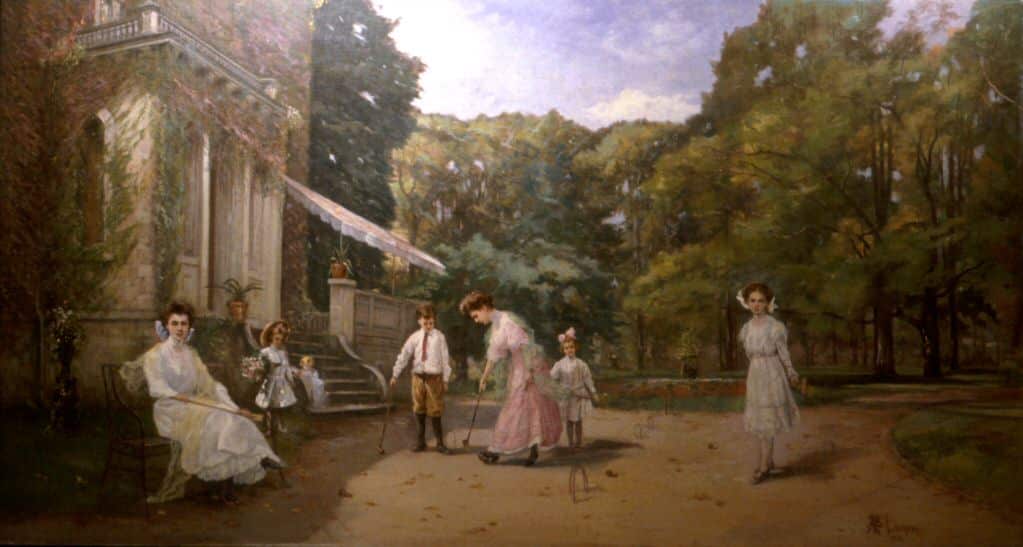
But what did people want to do on these lawns? Most often it was play! Look closely at the advertisement for the lawn mower and in the background you’ll see two couples in a spirited match of croquet. The composition is not accidental, for one of the many virtues of croquet was that it allowed for lighthearted dalliances between the sexes at a time when social convention often tightly regulated behavior. There were special outfits, especially for women, that were designed to facilitate croquet playing, showing ankles to best advantage when taking a turn around the wickets. The game was obviously not just for adults, as this lovely painting from 1910 of the Neun family of Rochester shows.
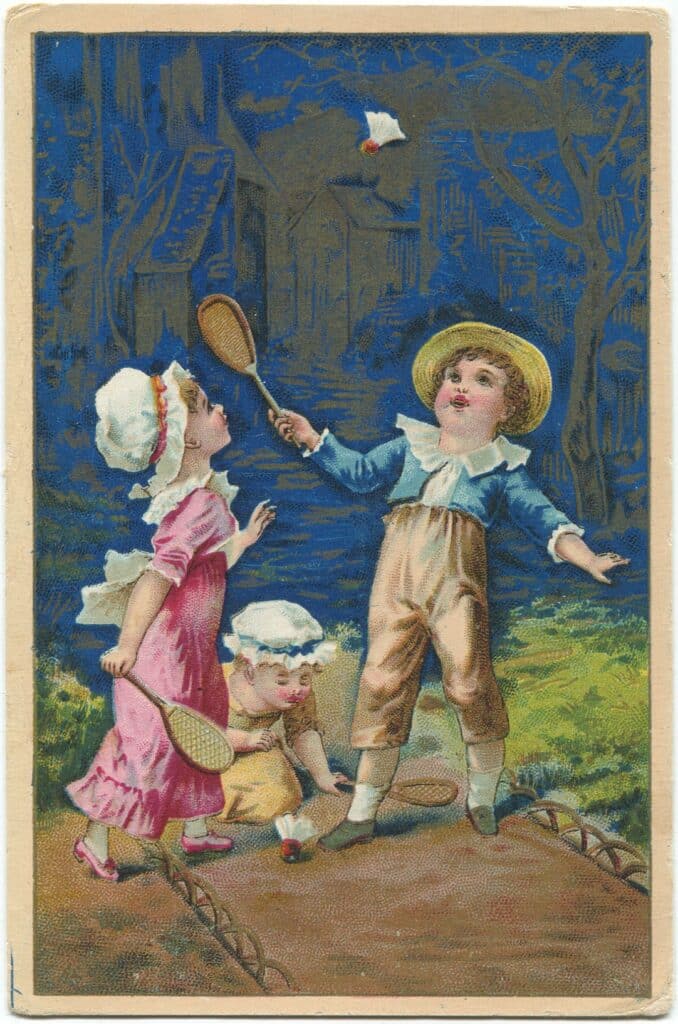
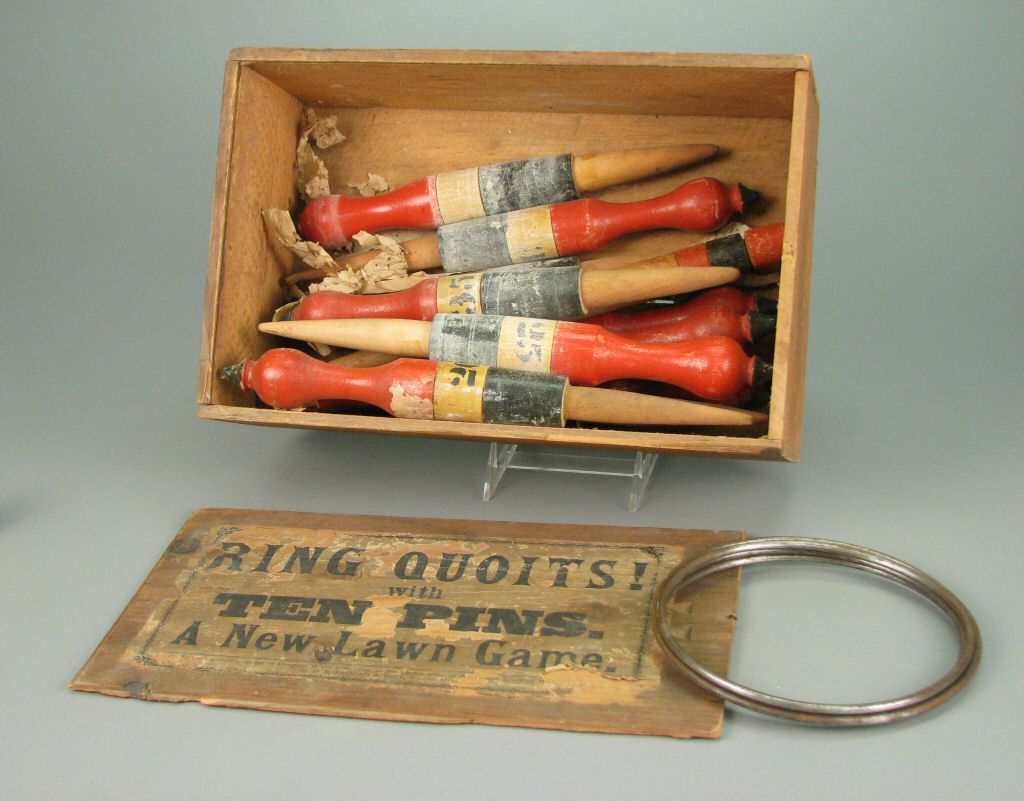
Other games became popular throughout the 19th and early 20th centuries. Racket games such as battledore, shuttlecock, and badminton were special favorites, while the especially well-heeled created lawn tennis courts. Lawn bowling and ring tosses involved aiming and throwing. Again, it must be noted that these were largely products for the middle class which excluded many disadvantaged people such as the urban poor or Black people in the South who lacked the resources to have lawns of their own.
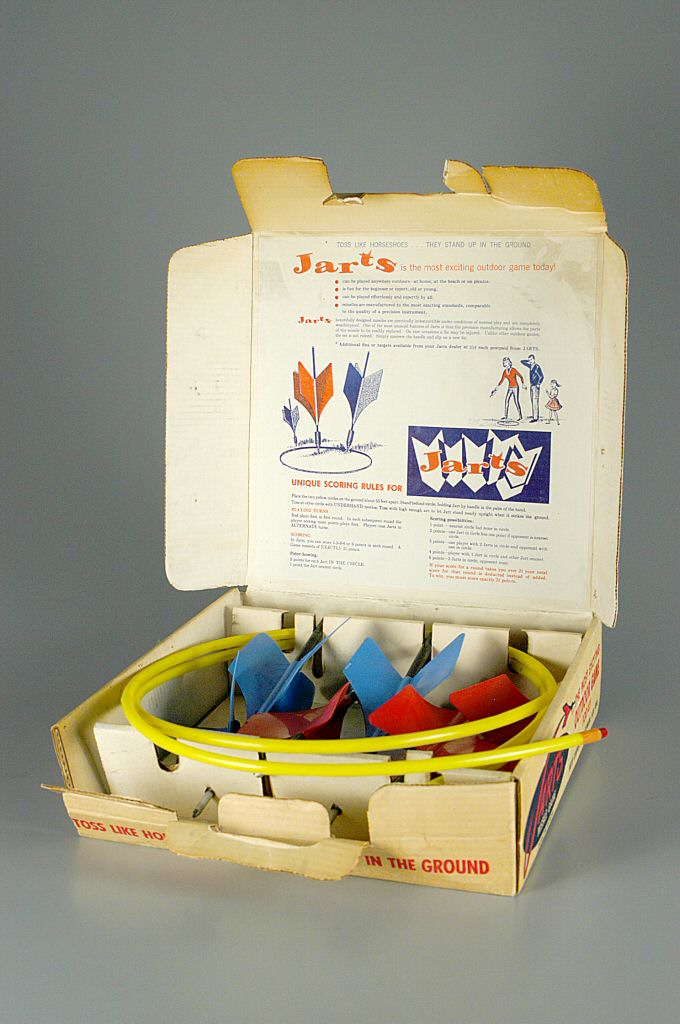
The 20th century saw a large upsurge in the appeal of lawn games as more and more people moved to the suburbs (though again there were often exclusionary laws and practices that kept Black homeowners out of redlined neighborhoods). Levittown, which opened right after World War II, set itself apart by providing ready-made lawns for people, thus providing the setting for all sorts of fun yard play that toy makers were eager to capitalize on. Games like toss-across could be played indoors or outdoors, while Jarts earned a notorious reputation as a killer game, literally and metaphorically, that ultimately earned it a ban from the Consumer Product Safety Commission in 1988. On a personal note, with the Italian side of my family, get togethers were almost always marked not only by plenty of food and spirited conversation, but also by hard-fought games of bocce.

Today, with the vast increase in the amount of time that children and adults spend on screens, the amount of time people play lawn games has declined. But they’re still popular and fun, especially when people gather in larger groups. Ladder ball became a hit a few years ago, there’s even a professional corn hole circuit, and competitors battling it out with the Viking game try to knock over blocks by tossing wooden sticks. Today, lawns are within reach of almost everyone in America, and their enduring promise remains the same: a little fun, in the sun, with a game.


